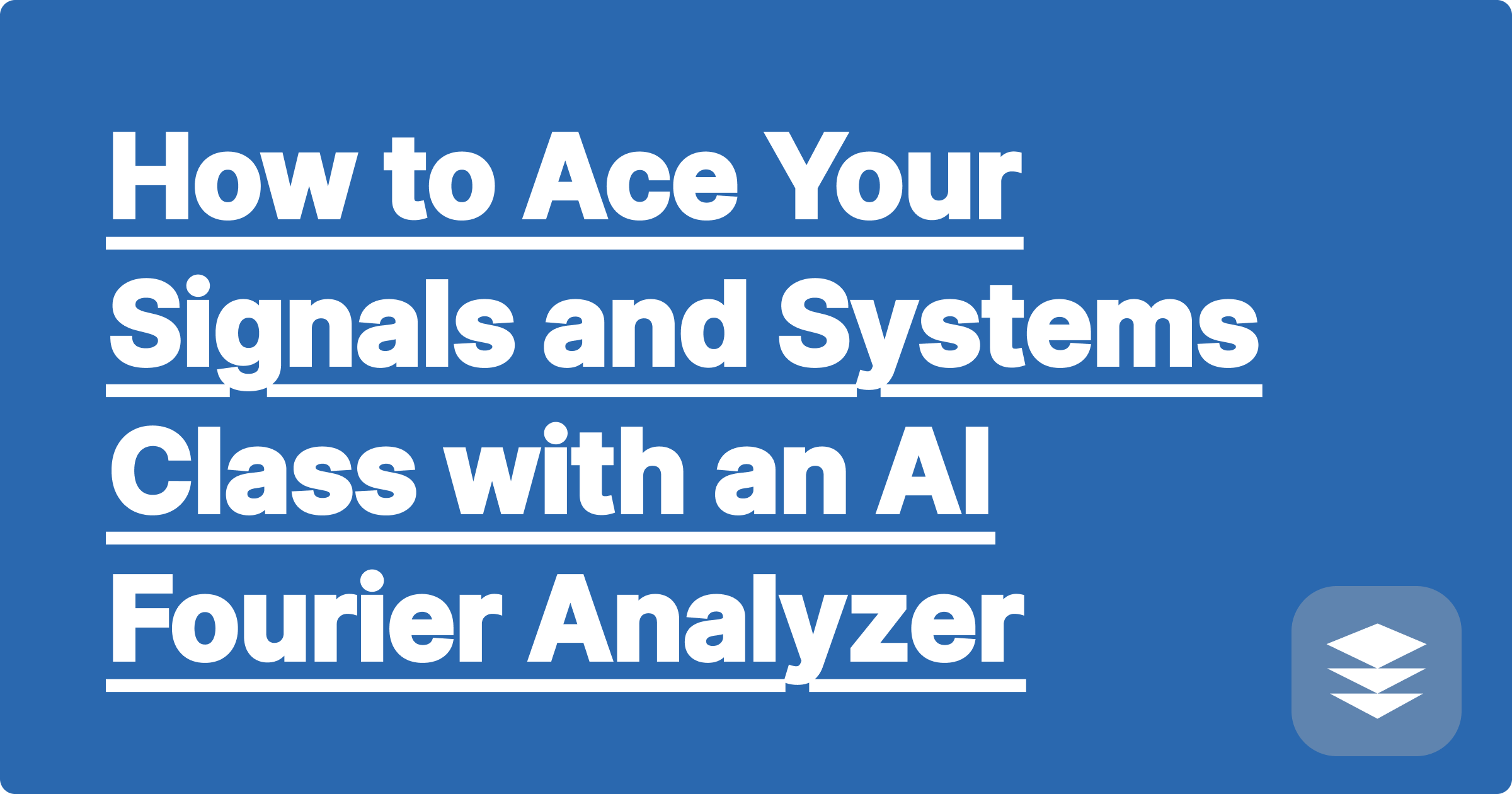
Signals and Systems is one of the most abstract and mathematically challenging courses in the entire Electrical and Computer Engineering curriculum. It's the bridge between circuit theory and more advanced topics like communications and control systems. The course requires you to leave the comfortable time domain (t) and learn to think in the frequency domain (s or ω).
This means mastering two powerful but complex mathematical tools: the Laplace transform and the Fourier series/transform. Calculating these by hand involves difficult, error-prone integration. Understanding what they mean—how they represent a signal as a sum of frequencies—is a major conceptual leap.
What if you had a personal fourier series calculator ai that could handle the complex math and a tutor that could explain the concepts? A powerful laplace transform solver like GPAI Solver is exactly that tool.
The main difficulty of Signals and Systems is learning to see a signal not as a function of time, but as a spectrum of frequencies.
The GPAI Solver can automate the most difficult calculations in the course, showing you every step.
Use Case 1: The Fourier Series
Your Prompt: "Find the trigonometric Fourier series for a square wave with amplitude A and period T."
GPAI's Step-by-Step Solution:
Use Case 2: The Laplace Transform
Your Prompt: "Find the Laplace transform of the function f(t) = t * e^(-2t)."
The AI will use the definition of the Laplace transform or a standard transform property (like frequency shifting) to quickly find the correct function F(s).
An equation is one thing; a picture is worth a thousand words. You can use the GPAI Solver to visualize the results.
Your Prompt: "For the square wave from before, plot the first five terms of its Fourier series on a graph. Then, show the frequency spectrum, plotting the amplitude of each harmonic (bₙ) vs. the frequency (nω₀)."
The AI can generate two powerful plots:
[Image: An AI-generated frequency spectrum graph, showing vertical bars of different heights at different frequencies (ω₀, 3ω₀, 5ω₀, etc.), representing the harmonics of a square wave. Alt-text: A Fourier series calculator AI visualizing the frequency components of a signal.]
Use the GPAI Cheatsheet feature to create the ultimate study guide.
Signals and Systems is a foundational course for all of ECE. Mastering the ability to move between the time and frequency domains is essential. By using an AI to handle the difficult integrations and to visualize the abstract concepts, you can build a deep and intuitive understanding of how signals truly work.
[Don't get lost in the math of Signals and Systems. Use GPAI Solver to master Fourier and Laplace transforms with step-by-step help. Sign up for 100 free credits and start thinking in frequency.]
A Step-by-Step Guide to Your First MATLAB/Simulink Project with AI
How to Design and Analyze a Simple RLC Circuit with an AI Assistant
The Ultimate Cheatsheet for Your Thermodynamics Final Exam
From Free-Body Diagram to Solution: Solving Statics Problems with AI
How to Ace Your Signals and Systems Class with an AI Fourier Analyzer
Your Personal Assistant for Fluid Mechanics Homework
How to Create an Algorithm Analysis (Big O) Cheatsheet with AI
A Guide to Writing and Verifying Mathematical Proofs with AI
How to Build a Complete Study Guide for Your Operating Systems Course
Using an AI to Solve and Explain Probability Distribution Problems